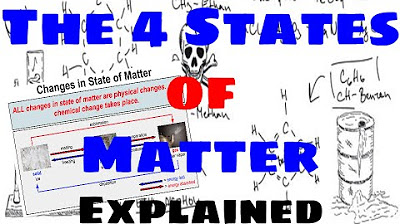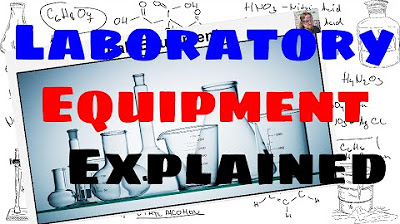What is a Tectonic plate?
Summary
TLDRIn this educational video, Mr. Klick explains the concept of tectonic plates, their movements, and why they shift. The video covers the formation of deep ocean trenches, like the Mariana Trench, due to tectonic movements. It introduces the three main types of plate movements: divergent, convergent, and transform. The video also delves into the causes of plate motion, specifically convection currents in the Earth's asthenosphere, and how these movements can lead to seismic events like earthquakes. Finally, the video tests viewers' understanding of tectonic movements and their causes.
Takeaways
- 😀 Tectonic plates are large pieces of Earth's crust that move on the semi-fluid mantle below them.
- 😀 The Earth's surface was once a single large landmass called Pangaea, which broke apart into two major landmasses: Gondwana and Laurasia.
- 😀 There are 10 major tectonic plates on Earth, which continue to move and shape the planet's surface.
- 😀 Divergent plate movement occurs when two plates move away from each other, leading to the formation of new oceanic crust and volcanic activity, like the Mid-Atlantic Ridge.
- 😀 Convergent plate movement happens when two plates collide, leading to the formation of mountain ranges, deep ocean trenches, and volcanic activity, as seen with the collision between the Indian and Eurasian plates.
- 😀 Transform plate movement occurs when two plates slide past each other, causing earthquakes and fault lines, such as the San Andreas Fault in California.
- 😀 The movement of tectonic plates is driven by convection currents in the Earth's mantle, where hot magma rises, cools, and sinks, pushing the plates in the process.
- 😀 The forces from tectonic plate movements can trigger earthquakes and volcanic eruptions due to the accumulation of energy along faults.
- 😀 The Earth's mantle, which is partially molten, plays a crucial role in driving tectonic plate movement, allowing the plates to float and shift over time.
- 😀 Understanding tectonic plate movement helps explain natural phenomena like deep ocean trenches, mountain formation, and earthquakes, providing insight into Earth's dynamic geology.
Q & A
What are tectonic plates and how do they move?
-Tectonic plates are large, rigid pieces of Earth's crust that float on the semi-fluid layer of the mantle. These plates move due to convection currents in the mantle, driven by heat from the Earth's core.
How do tectonic plates form ocean trenches like the Mariana Trench?
-Ocean trenches like the Mariana Trench are formed by tectonic plates moving in a convergent direction, where one plate is forced beneath another in a process called subduction, creating deep oceanic depressions.
What is the significance of Pangea in plate tectonics?
-Pangea was a supercontinent that existed millions of years ago, where all the Earth's landmasses were joined together. It eventually broke apart, forming the continents as we know them today, driven by tectonic plate movements.
What are the three main types of tectonic plate movements?
-The three main types of tectonic plate movements are divergent (plates move apart), convergent (plates collide), and transform (plates slide past each other).
What happens during divergent plate movements?
-In divergent movements, two tectonic plates move apart, creating gaps that are filled by material rising from below the Earth's surface. This can lead to the formation of mid-ocean ridges and underwater volcanic activity.
What is the result of convergent tectonic plate movement?
-Convergent movements occur when two plates collide, leading to the formation of features like mountain ranges, deep ocean trenches, or volcanic eruptions, depending on the type of plates involved.
How does transform plate movement differ from the other types?
-Transform plate movement involves two plates sliding past each other horizontally. This creates friction and can lead to earthquakes, as seen in places like the San Andreas Fault in California.
What is the role of convection currents in the movement of tectonic plates?
-Convection currents in the Earth's mantle, caused by the heat from the core, drive the movement of tectonic plates. Hot material rises, cools, and sinks, pushing the plates in various directions.
What causes earthquakes during tectonic plate movement?
-Earthquakes occur when the tectonic plates move and release accumulated energy, often due to friction between plates or sudden shifts in the Earth's crust, producing seismic waves.
What is the athenosphere and how does it relate to tectonic plate movement?
-The athenosphere is a semi-fluid layer beneath the Earth's lithosphere. It allows the tectonic plates to move over it due to its ability to flow slowly, which is crucial for plate tectonics and the formation of geological features.
Outlines

Dieser Bereich ist nur für Premium-Benutzer verfügbar. Bitte führen Sie ein Upgrade durch, um auf diesen Abschnitt zuzugreifen.
Upgrade durchführenMindmap

Dieser Bereich ist nur für Premium-Benutzer verfügbar. Bitte führen Sie ein Upgrade durch, um auf diesen Abschnitt zuzugreifen.
Upgrade durchführenKeywords

Dieser Bereich ist nur für Premium-Benutzer verfügbar. Bitte führen Sie ein Upgrade durch, um auf diesen Abschnitt zuzugreifen.
Upgrade durchführenHighlights

Dieser Bereich ist nur für Premium-Benutzer verfügbar. Bitte führen Sie ein Upgrade durch, um auf diesen Abschnitt zuzugreifen.
Upgrade durchführenTranscripts

Dieser Bereich ist nur für Premium-Benutzer verfügbar. Bitte führen Sie ein Upgrade durch, um auf diesen Abschnitt zuzugreifen.
Upgrade durchführenWeitere ähnliche Videos ansehen

The Four States of Matter - Explained

Lab Equipment - Explained

3. Gr 11 Life Sciences - Population Ecology - Theory 3 Mark Recapture Method

4. Gr 11 Life Sciences - Population Ecology - Worksheet 1

PENJASKES KELAS X - SOFTBALL

Introduction to Culture [AP Human Geography Review Unit 3 Topic 1]

Menentukan Mr ( massa molekul relatif )
5.0 / 5 (0 votes)
